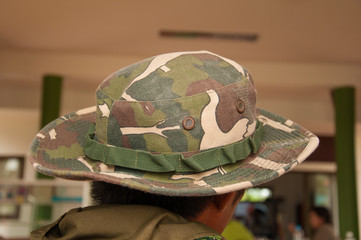The Blue Nile Hats Adobe

Paul Buchanan, the elusive and self-deprecating frontman of Scottish pop group, once compared making records to falling in love. “You can’t do it every year,” he elaborated.

Since forming in 1981, the Blue Nile have released only four albums, each one followed by a long period of silence. Their music is patient and understated. Their songs mostly explore the trajectory of relationships, from their glittery beginnings to their plateaus of contentment and their exhausted, haunted finales. Their stories are set in the smoky locales of noir: in ragtown, shantytown, tinseltown. It’s usually raining.
Piranha Panic Full Game. To listen passively to the Blue Nile is to ride in a taxi through the city at night as familiar scenes blur outside your window. Adriana Antoni Iubirea Mea Zippy Pe. To listen closely to the Blue Nile is to become a part of the scenery. In this way, Buchanan’s metaphor about the time between albums comes alive. The long gestation of each record suggests, as in the early stages of a relationship, a sharpening of the senses, getting lost in a world that’s getting smaller around you. You want to do it right this time. The Blue Nile’s music also sounds like falling in love, slow and starry-eyed, with melodies that fizzle and glow like streetlights. By the time they released their sophomore album, Hats, in the autumn of 1989, Buchanan was 33 years old, and his songs, once littered with bold declarations of love, now seemed to be composed entirely of ellipses and question marks.
In June 1996, seven years after Hats, the Blue Nile released their third album, entitled Peace at Last. The album displayed a marked difference in style to the first. In June 1996, seven years after Hats, the Blue Nile released their third album, entitled Peace at Last. The album displayed a marked difference in style to the first. Listen to music by The Blue Nile on Pandora. This came in 1989 with Hats. The Blue Nile is an alternative/pop band from Glasgow. Hats (Deluxe Version). Find a The Blue Nile - Hats first pressing or reissue. Complete your The Blue Nile collection. Shop Vinyl and CDs.
The members of the Blue Nile met while they were students at the University of Glasgow. After graduating and easing into an uninspiring teaching gig, Buchanan says he and his friends turned to music in search of a career that they “could be instinctive about.” With Buchanan on guitar and vocals, Paul Joseph “PJ” Moore on keyboards and synth, and Robert Bell on bass, they recruited a drum machine as their fourth member. The Blue Nile’s first single—1981’s “I Love This Life”—is a catchy song about an up-and-coming rock band doomed to remain a cult act. Dreaming of adoring crowds and hit records, Buchanan sings with appropriate joie de vivre, but even on his first single, he sounds more like a veteran actor portraying a teenager.
He has the type of pained, dignified voice, like or, that makes it hard to imagine him ever actually being young. “I know I’m going out of style,” he sings and immediately asks, “Am I already out of style?” The song, paired with a downbeat B-side called “The Second Act,” became a self-fulfilling prophecy as the band continued in relative obscurity. Their debut album, A Walk Across the Rooftops, arrived in 1984 via the stereo equipment company Linn, who were looking to expand their reach by starting a label. (“Linn weren’t a record company and we weren’t a band,” Buchanan would later reflect in Elliot J.
Huntley and Edith Hall’s biography From a Late Night Train.) Still, their unusual working relationship allowed the members of the Blue Nile to record in Linn’s studios and operate without a strict deadline. As so often happens with our first brushes of love, the band chased this experience the rest of their career.
No pressure and no expectations—a creative process they could be instinctive about. Whittled down to seven songs, A Walk Across the Rooftops is a stately record that established the Blue Nile’s sound—a sprawling, sophisticated strain of ambient synth pop—and their major themes. “I am in love with a feeling,” Buchanan sings in “From Rags to Riches.” “Is there a place in this city/A place to always feel this way,” he asks in “Tinseltown in the Rain,” a minor hit in Holland and the closest thing the Blue Nile have to a signature song.
The album, punctuated by Bell’s slap bass and a vibrant backdrop of keys and guitars, dazzled critics and established a small audience of devoted fans. Instead of rushing to make a follow-up, the Blue Nile studied where their music had taken them, as they traveled through America and Europe. “[O]ne of the best things we saw in our first trip to London,” Buchanan told NME after the album’s release, “Was a guy and a girl standing in Oxford Street They were obviously having a moment—breaking up or something, something that was wrong—and you just looked at it and knew the feeling. It was a brilliant reminder of what’s worth all the hassle.” It was an omen. The five years between A Walk Across the Rooftops and Hats were trying times for the band. Relationships, both romantic and professional, crumbled around them. An album’s worth of material was scrapped—the feeling just wasn’t there—and the tapes were burned.